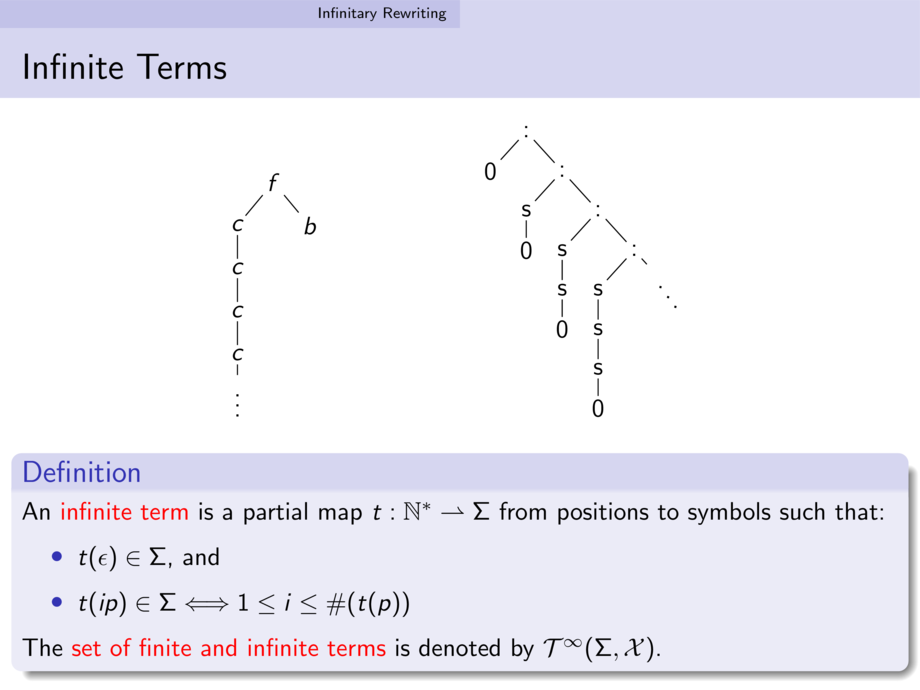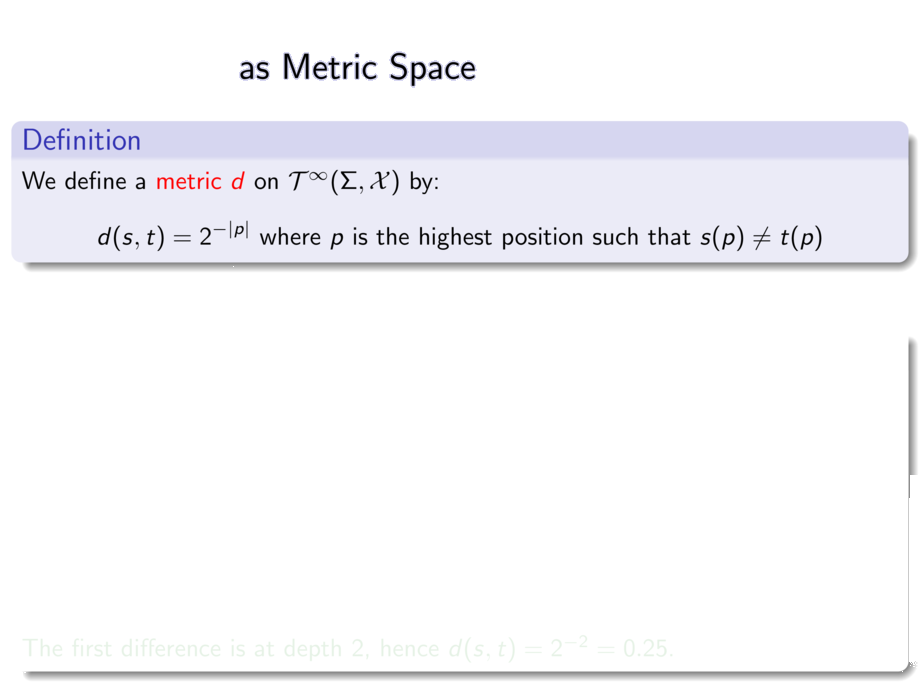



































































































7/87
\begin{frame}
\frametitle{Infinite Terms as Metric Space}
\begin{definition}
We define a \alert{metric} $\alert{d}$ on $\iter$ by:
\begin{align*}
d(s,t) = 2^{-|p|} \text{ where $p$ is the highest position such that $s(p) \ne t(p)$}
\end{align*}
\end{definition}
\pause
Note that $d(s,t) = 0 \;\Longleftrightarrow\; s = t$.
\pause
\begin{example}
\begin{center}
\begin{tikzpicture}[level distance=6mm,inner sep=0.5mm,sibling distance=10mm]
\node (s) {$f$}
child { node {$c$}
child { node {$c$}
child { node {$c$}
child { node {$c$}
child { node {$\vdots$}
}
}
}
}
}
child { node {$c$}
child { node (b) {$b$}
}
};
\node [left of=s,node distance=7mm] {$s = $};
\node (t) [right of=s,node distance=30mm]{$f$}
child { node {$c$}
child { node {$c$}
child { node {$c$}
child { node {$c$}
child { node {$\vdots$}
}
}
}
}
}
child { node {$c$}
child { node (c) {$c$}
child { node {$b$}
}
}
};
\node [left of=t,node distance=7mm] {$t = $};
\end{tikzpicture}
\end{center}
\vspace{-2ex}
\pause
The first difference is at depth $2$, hence $d(s,t) = 2^{-2} = 0.25$.
\end{example}
\end{frame}

